Art & Exhibitions
Pop Legend Tom Wesselmann Like You’ve Never Seen Him Before
A new show explores the artist’s little-known work with laser-cut metal.
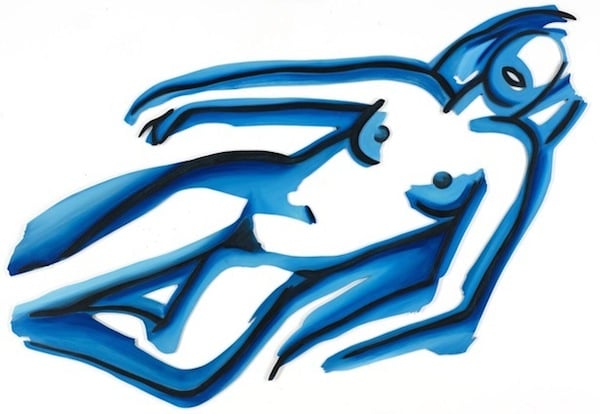
Photo: courtesy Galerie Gmurzynska
A new show explores the artist’s little-known work with laser-cut metal.

Although many have tried, few artists have successfully mastered a new medium in their later years. Repetitions ad nauseam of the forms that made a career are the norm, and new departures the exception. Those who did manage—Pablo Picasso with ceramics, say, or Henri Matisse with cut-outs—have earned a special place in art history. “A Line to Greatness,” a new exhibition at Galerie Gmurzynska in St Moritz, shows that pop artist Tom Wesselmann, he of Great American Nudes fame, deserves a place among these giants. A relentless explorer of form, he contributed in the early 1980s to the honing of a new metal laser-cut technique, which would allow him to free the drawn line of his sketches from their support, and let them exist in space, pure, independent, relying only almost exclusively on themselves. The sheet of paper or canvas that until then had been the sine qua non of pictorial representation ceased to be a primary concern. With this new addition to his toolbox, Wesselmann achieved what art historian Marco Livingstone describes as nothing short of a “self-reinvention.”
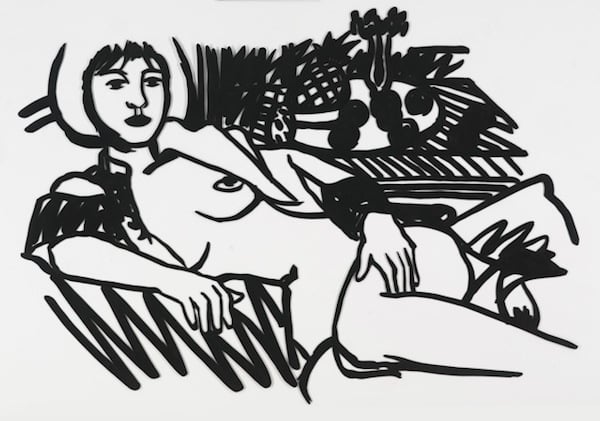
Tom Wesselmann, Monica in Robe with Matisse and Pillow N24 (1986)
Photo: courtesy Galerie Gmurzynska
The results are everywhere here. Lightly pinned to the wall, the nudes in this “steel drawings” series are strikingly ethereal, like suspended gestures still pulsating with the energy of the moment in which they were made. For a few seconds, one might even be tempted to indulge in the fantasy that Wesselmann had just walked out, having drawn directly onto the gallery’s pristine walls. Take Monica Cross Legged with Beads (Grey) N9 (1985-90), a large grey and black figure that greets visitors as they come in. It appears freshly drawn: the background is densely hatched to give the composition some depth, the breasts’ shadow is another, casual hatching, and the pubic hair a messy dark scribble of the kind one can imagine being done in the studio while attempting to fix the fleeting pose of a live model. “Mistake” lines, by the right nipple or the wrist, all contribute to this sense of instantaneity.
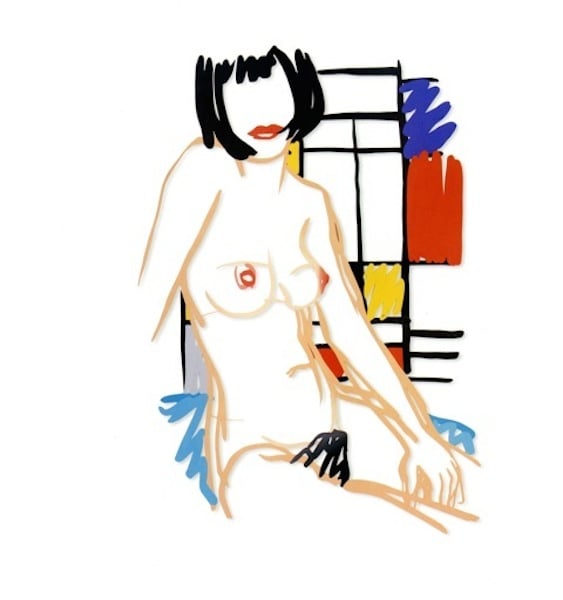
Tom Wesselmann, Monica sitting with Mondrian (Variation #2) (1988)
Photo: courtesy Galerie Gmurzynska
There is of course nothing instantaneous about it. Each drawing was painstakingly cut out, at first by hand and later with the help of a laser, and then hand-painted by Wesselmann himself. Yet all that these filigree compositions evoke is a sense of ease, and effortlessness. In Monica sitting with Mondrian (variation #2) (1988), the artist fills the squares of the De Stijl-esque background with a squiggle that looks convincingly spray-painted, though is in fact carefully applied with a brush. This whimsical intervention elegantly bridges early modernist abstraction and 1980s street art aesthetic. It anchors Monica in her “now.”
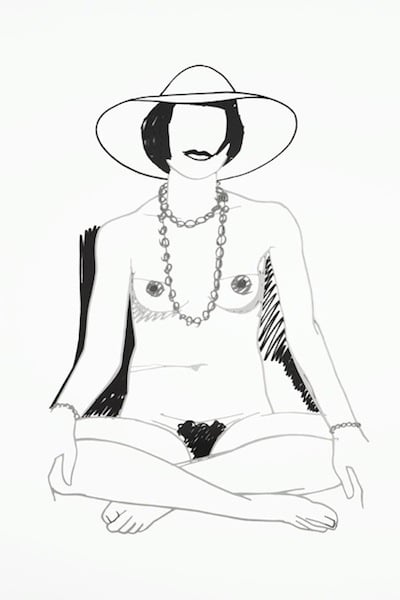
Tom Wesselmann, Monica Cross Legged with Beads (Gray) N9 (1985/1990)
Photo: courtesy Galerie Gmurzynska
For all the steel drawings’ lightness, the metal also gives Wesselmann’s nudes an enhanced presence, a physicality which not only echoes the sculptural quality of his earlier assemblages—such as Great American Nude No. 48 (1963), which set the artist’s auction record, selling for $10.7 million in 2008— but also exacerbates their erotic power. The artist might have radically changed medium for this series, but he stuck to the subject he had been investigating since the very beginning of his career: the tradition of the nude, and the tension between nude and naked bodies. Unlike De Kooning’s Women, in which the female body is brutalized by the post-cubist, abstract expressionist brush, Wesselmann presents objects of a different kind of desire. In that sense, he’s the direct heir of the Odalisque painters of the 19th and early 20th century, who abandoned the lofty nude goddesses for the more accessible females of a fantasized Orient. The reference to Matisse is unmistakable here in Blue Nude #3 N125 (1999). The piece echoes a favorite motif of the French artist’s—itself derived from an early Fauvist painting—inspired by a woman encountered during Matisse’s trip to “exotic” Algeria at the turn of the century.
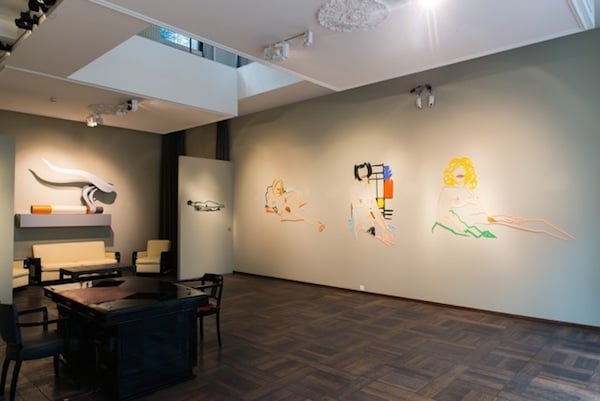
Installation view of “A Line to Greatness” at Galerie Gmurzynska. Photo: courtesy of Galerie Gmurzynska
Yet Wesselmann doesn’t stop at the cliché of the submissive courtesan. He pictures contemporary women; women who appear in control of their bodies and sexualities. Their open abandon is one of self-confidence. They seem to accept the viewers’ gaze with neither provocation nor embarrassment, present themselves as the powerful women that they are. This, combined with the laster cut technique (which, more than three decades after it was established by Wesselmann, has lost nothing of its freshness) gives these works an unmistakable sense of contemporaneity. Tradition is harnessed, distilled—and reinvented.
Curious to see know which Tom Wesselman artworks are for sale on artnet Auctions? See them here.